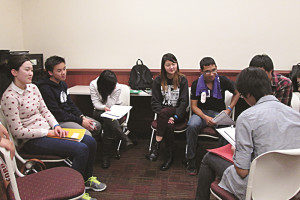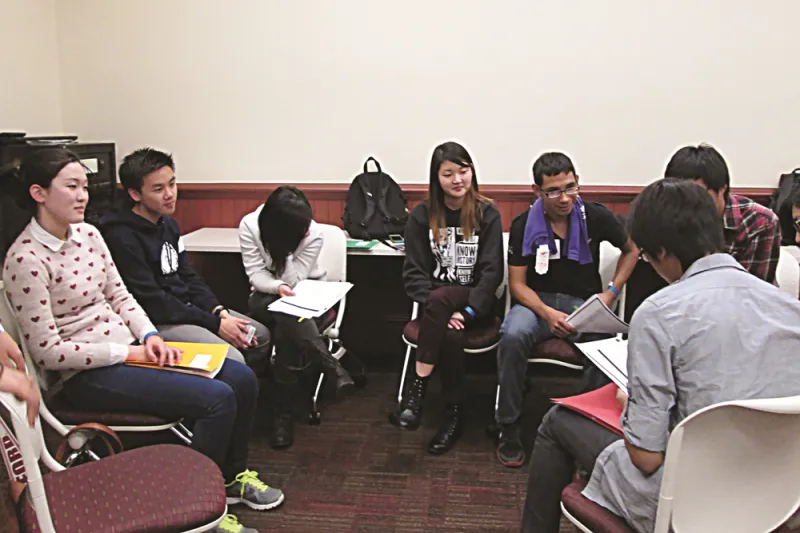
More than 400 students gathered at Cubberley Auditorium this weekend for the 18th annual Listen to the Silence conference, an event intended to bring together activists to discuss issues affecting the Asian American community.
“[Listen to the Silence] mainly came about because Asian Americans as a community felt that we didn’t have a space where we could voice issues and struggles and stuff,” said 2014 conference co-chair James Huynh ‘15. “That’s why it’s called Listen to the Silence—listen to this community that has a history of oppression.”
The keynote speakers of this year’s conference, which was themed around “Art and Activism,” were slam poet and actor Beau Sia and comedian Kristina Wong, with featured work by artist Nidhi Chanani.
Conference co-chair Anh Truong ‘14 said that the theme was meant to be more relatable to participants.
“It’s a lot easier for attendees to empathize with something they can see or hear or feel, versus you just sitting in a workshop and listening to this issue that might be a little far away from you,” Truong explained.
In a profanity-laden speech that provoked numerous rounds of laughter and applause from the audience, Sia talked about his efforts to find meaning within his work and his life.
“All that chasing of external things, all that running [around] trying to figure out who I was through other people and other people’s perception, in a difficult, difficult way taught me that I didn’t really understand all of my feelings,” Sia told the audience.
In her address, Wong spoke about her efforts to build a foothold in the art world and gain an audience for her work.
“We had two keynote speakers who went up there and spoke, and it was absolutely amazing—they were my favorite speeches of all the years I’ve been here,” Truong said.
Chanani, a San Francisco-based illustrator and artist, said that she was excited about the opportunity to connect to a young audience. According to Chanani, her goal in life is to make people happy, something she believes is a political act.
“I’ve also heard a lot from people how they really appreciate seeing artwork that reflects them, because most of the characters that are in my work look like me—they have dark skin and dark hair,” she added. “It’s nice to see artwork that can make you happy and make you feel like you are part of it.”
In three sessions throughout the day, activists and students also hosted workshops ranging from “Queer Politics and Queer Poetry in Modern Singapore” to “Artistic Empowerment Through Korean Drumming” to “Equipping Yourself as an Interpreter.”
“I don’t think there’s any one issue that we give particular attention to, [but] we represent a bunch of themes,” Truong said. “We do health issues like mental health and hepatitis B or workers’ rights and immigration rights. There are so many things [to discuss].”
According to Huynh, the conference has grown and attracted more interest from other schools over the past several years.
“The cool thing about [Listen to the Silence] is that we really strive to find workshops that equip attendees with some skills or knowledge so that they can go back into their communities and make the changes that they want to see,” Huynh said.
For the first time, this year’s conference also featured “research lightning talks” in which Stanford students presented their research on topics related to the Asian and Asian American communities.
The event closed with a concert by performers including Japanese pop star and Stanford student Kylee Saunders ‘16, a capella group Talisman and dance group Dil Se.
Amara Tang, a sophomore from UC-San Diego, said that her school’s Asian and Pacific Islander Student Alliance sends a contingent to the Stanford conference because of the quality of the speakers and the workshops.
“We like to promote this conference every year, and we make the trip up here just to come,” Tang said. “It’s really important that groups from all over California meet to talk about these similar issues that we all can reflect upon.”
Contact Jana Persky at jpersky ‘at’ stanford.edu.
